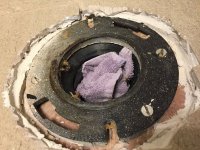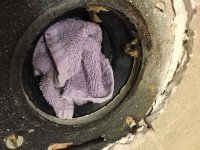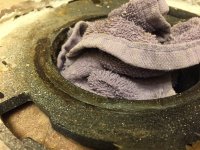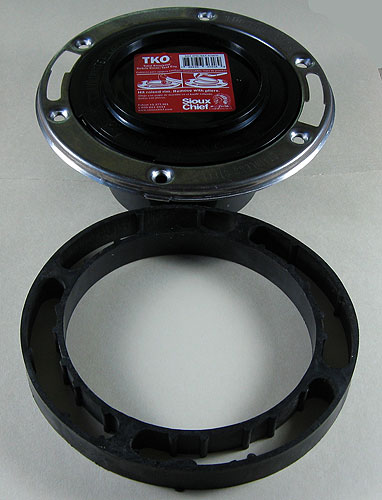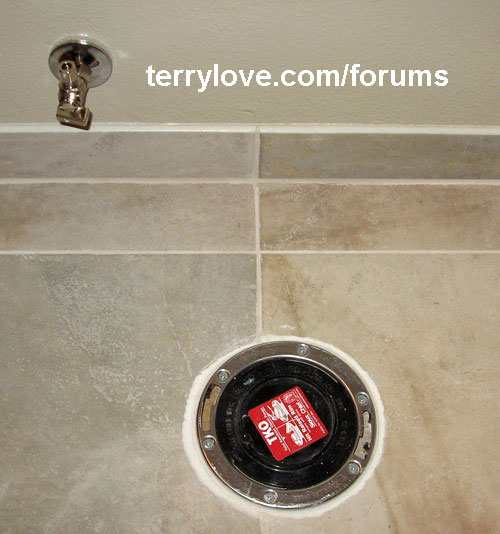I retiled a bathroom and the existing flange is 1/4" below the new tile surface. The existing (ABS) flange is in good shape and screwed to subfloor. I visited my local plumbing supply counter and he said I should use a flange extension to increase height.
The one he gave me (Bruco Plumbmaster) did not fit flush to the surface so I went back in. He said cut off the little lip. Did that and it still rocks on the flange. There is about a 1/4" raised face (1/16" high) ring around the inside edge of the existing flange face which is causing the extension to rock on the flange. I don't feel comfortable screwing that to the flange as it seems it could leak or even break due to the poor seating on existing flange.
I went back today and showed him a picture of the ring and he said "oh that's part of the test plug you just need to knock that out". Looking at it it sure seems to be integral to the flange and I'd hate to start banging on it and completely damage the flange.
I'm posting as I'm torn as to what the best next step is. I've read that I may not need the extension and could just use an extra thick wax ring or possibly two rings. But I've read other comments that two rings is not a good idea.
Is that part of the test plug and I can knock it out without damaging the entire flange? Is that the best option?
I've reset several toilets over the years and did have one that leaked a little but 3 out of 4 ain't bad. This one is over a finished first floor so very difficult to check for leaks. Want to do it right the first time.
I've posted pictures to help. Appreciate some guidance as I'm getting frustrated not knowing if the guy at the plumbing shop is giving me complete advise. He seems to be a newer guy vs the guys that used to work there.
The one he gave me (Bruco Plumbmaster) did not fit flush to the surface so I went back in. He said cut off the little lip. Did that and it still rocks on the flange. There is about a 1/4" raised face (1/16" high) ring around the inside edge of the existing flange face which is causing the extension to rock on the flange. I don't feel comfortable screwing that to the flange as it seems it could leak or even break due to the poor seating on existing flange.
I went back today and showed him a picture of the ring and he said "oh that's part of the test plug you just need to knock that out". Looking at it it sure seems to be integral to the flange and I'd hate to start banging on it and completely damage the flange.
I'm posting as I'm torn as to what the best next step is. I've read that I may not need the extension and could just use an extra thick wax ring or possibly two rings. But I've read other comments that two rings is not a good idea.
Is that part of the test plug and I can knock it out without damaging the entire flange? Is that the best option?
I've reset several toilets over the years and did have one that leaked a little but 3 out of 4 ain't bad. This one is over a finished first floor so very difficult to check for leaks. Want to do it right the first time.
I've posted pictures to help. Appreciate some guidance as I'm getting frustrated not knowing if the guy at the plumbing shop is giving me complete advise. He seems to be a newer guy vs the guys that used to work there.

